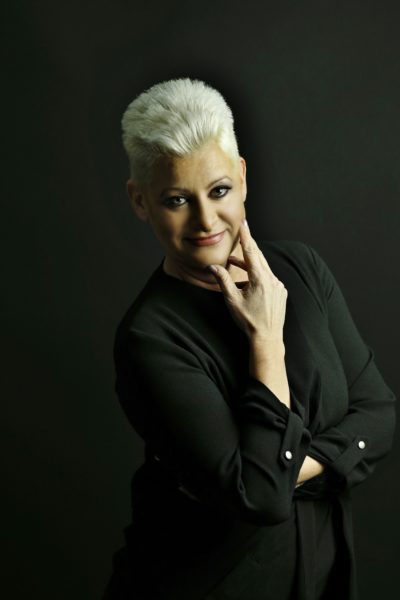COMMENTARY
Relationship Status: It's Complicated

Jaci Clement
photo by Bob Giglione
The other day, the Federal Communications Commission sent out a “reminder” to television, satellite and cable broadcasters to make emergency information available on-screen, in addition to the spoken word, in order to ensure those with disabilities are alerted to news that is “intended to further the protection of life, health, safety and property.”
For the record, the items under Section 79.2 of the commission’s rule which constitute an emergency are “pandemics, tornadoes, hurricanes, floods, tidal waves, earthquakes, icing conditions, heavy snows, widespread fires, discharge of toxic gases, widespread power failures, industrial explosions, civil disorders, school closings and changes in school bus schedules resulting from such conditions, and warnings and watches of impending changes in weather.”
Hold my beer
To those who witnessed last week’s tropical storm, you know Isaias had only one thing to say to the FCC: Hold my beer.
Let’s remind the FCC that when the power goes out, as it did for hundreds of thousands of people in the New York area, there is no watching of television. Or logging on to a computer to find out what’s up. Even text messaging alerts didn’t happen. We lose power, and cable — and with that goes the phones (which are VOIP, not the old-fashioned landlines) and the wifi. So while television news continues, and digital news sources provide updates, the public has no ability to access such news. In effect, the weather emergency births a communication emergency.
Much is playing out in the local news now, questioning the work and tax-payer dollars spent to fortify the power and communication infrastructure. On this front, progress seems elusive. Following Superstorm Sandy, the FCC held a hearing in New York City to determine what went wrong after our communication systems failed in stunning fashion. Then-Long Beach City Manager Jack Schnirman testified his office was reduced to calling Verizon’s 800-number in its quest to find emergency communication equipment. Conversely, Verizon’s representative testified the company had people on the ground who were ready to assist local municipalities. The breakdown wasn’t limited to equipment but to humanity itself: Coordination between the entities hadn’t been established, as historically, it hadn’t been needed.
Taking stock
Today, such coordination isn’t only needed. it’s growing. Climate change ushers in major weather events on a schedule that is increasingly more frequent, and more severe. Emergency management gets complicated with countless touchpoints, technology, and equipment –plus a variety of players working in different levels of government, in power companies, and at communication providers. There’s also another element to all of this that is overlooked: Much of those emergency plans assume people are experienced at working together. People retire, change jobs, and take knowledge with them. It’s one of the reasons the Emergency Alert System didn’t go off on Sept. 11: It had been so long since the EAS system had been used, no one was quite sure what to do.
So that brings us to radio. In particular, over-the-air radio broadcasters which, by FCC license, are required to serve the “public interest, convenience and necessity.” Let’s remind the public: You own the airwaves, not the stations. The stations are the caretakers, and they who work for you.
Somewhere in the past few decades, the commission slipped out of its laissez-faire doctrine and morphed into something akin to a coma. So now it is true that the FCC tossed out specific rules regarding news and public affairs programming requirements for radio stations. Despite that, the intent is clear that radio is to serve you, especially in an emergency.
Take a gander at the character of radio on Long Island, which is among the top 20 radio markets in the country: Throughout the storm, by and large, there was music. Period. Of the Island’s roughly 18 commercial radio stations, WALK provided some rip and read to give a daily update (a huge step forward from the station’s performance in recent years, but still far less than what you’d expect coming from the Island’s largest radio broadcasting company and its five Long Island stations. Of course, the fact that a Connecticut company owns it doesn’t help the situation.) We do have two or three tiny stations that do local news and talk — but the limitations to their signal strength leaves the Island’s overall population of nearly 3 million people in the dark. Interestingly, the bulk of Long Island radio news comes from our colleges — and let’s be clear: students should not bear the burden of keeping the public safe — and our noncommercial stations. No, what Long Island largely relies on is the work of New York City broadcasters. In particular, WCBS Newsradio 880 and 1010WINS. First, we must say thank you. Second, we must ask why is Long Island not taking care of itself?
Now take action
The times we’re living in are murky when it comes to defining who is responsible for what. People are calling on the New York State Public Service Commission to investigate PSEG’s response to the storm. PSEG says it doesn’t answer to the commission. And around we go.
One thing that is clear, however, is this: Where people spend their advertising dollars is no longer just about reaching an intended audience, but about supporting media outlets they believe in. Why support outlets that fail to provide news and information to the communities they serve? Put another way: Why not make it a priority to support the ones that do?
If you believe these communication issues need to be resolved, then here’s actually one more thing you can do, in addition to deciding what media outlets to support: Forward this to your Congressional representative. Let’s take this moment to remind them they are in charge of the FCC.
Get media savvy.
join now
